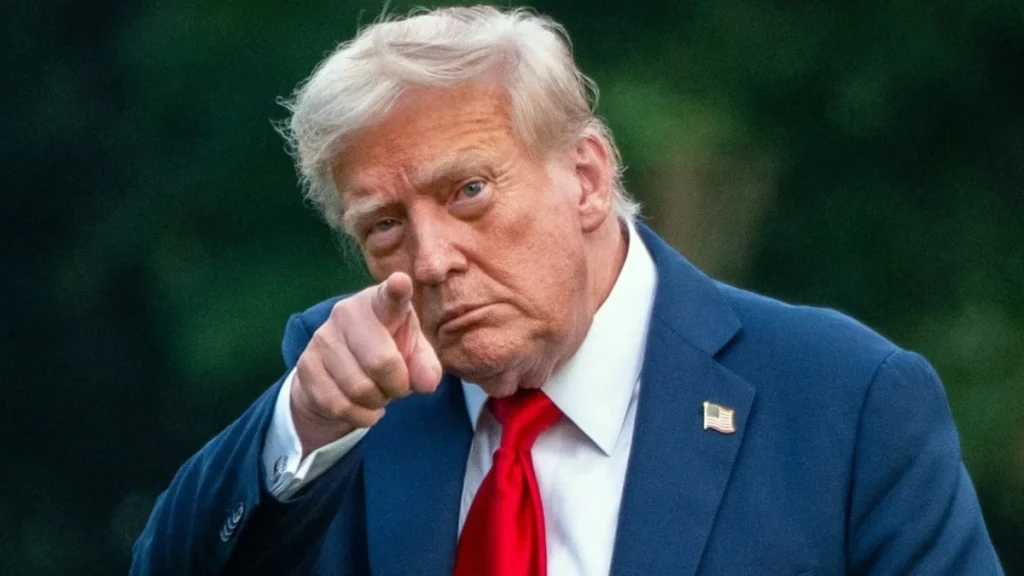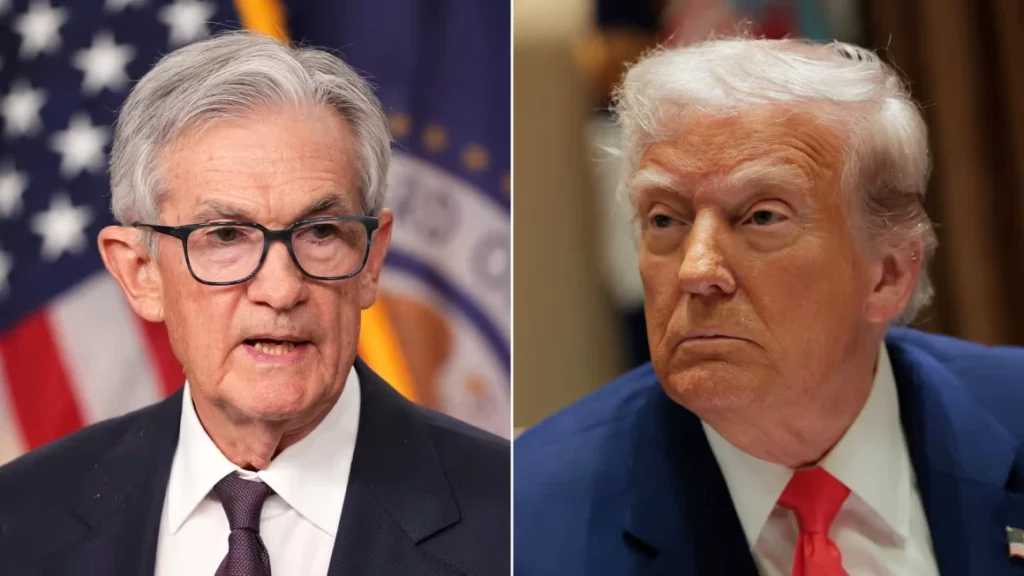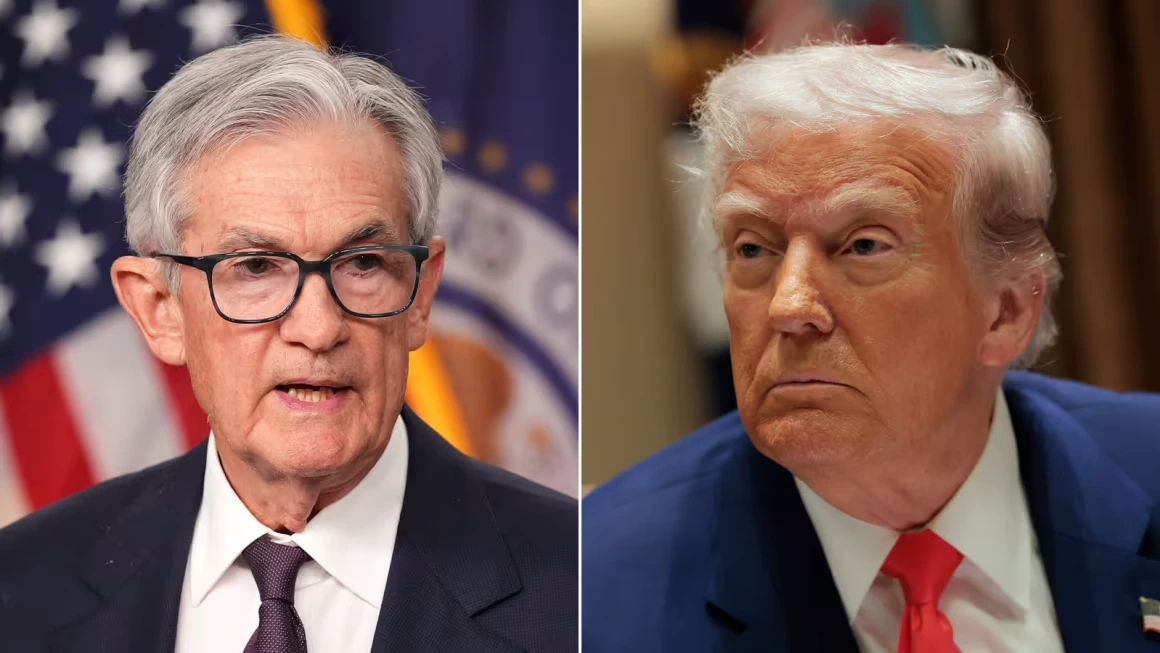Donald Trump blames Fed Chair Jerome Powell for costing the U.S. “hundreds of billions” by not slashing rates. But will firing him really ease America’s record $1 trillion interest burden?
Trump Slams Fed Chair Powell Over Interest Rates: Can Firing Him Really Save the U.S. Billions?
In a fiery campaign to oust Federal Reserve Chair Jerome Powell, former President Donald Trump has blamed him for costing the United States “hundreds of billions of dollars” by refusing to slash interest rates.
In a handwritten note posted on Truth Social, Trump accused Powell of failing the country:
“You have cost the USA a fortune and continue to do so. You should lower that rate by a lot. Hundreds of billions of dollars are being lost.”
Trump’s remarks come as the nation faces record-high interest payments on its ballooning federal debt—set to exceed $1 trillion annually for the first time in history, according to Congressional Budget Office estimates.
But would firing Powell and cutting rates actually fix America’s mounting interest burden? Experts say: not necessarily.
Why Trump Wants Rates Slashed
Trump argues that if the Federal Reserve had acted sooner and more aggressively, the U.S. could be paying “1% interest, or better”, saving taxpayers trillions over the next decade.
His comments come amid growing anxiety over soaring interest costs, which have now surpassed Medicare and defense spending in the federal budget. In fiscal 2020, the U.S. paid $346 billion in interest. This year, it’s projected to hit $952 billion, with further increases on the horizon.
Would Lowering Rates Actually Help?
Shai Akabas of the Bipartisan Policy Center warns that the federal funds rate is only one factor influencing U.S. borrowing costs.
“It’s an easier lever to pull for those wanting to reduce federal interest costs, but Fed action alone won’t guarantee success,” Akabas said.
Cutting rates could help with short-term Treasury securities, but longer-term bonds like 10-year and 30-year Treasuries may not see significant relief. In fact, steep cuts risk sparking inflation and driving up long-term yields as investors demand higher returns.

Experts Suggest an Alternative Path
Marc Goldwein of the Committee for a Responsible Federal Budget argues that if Trump is serious about lowering interest payments, he should focus on reducing the annual deficit—a politically tough ask requiring tax hikes or deep spending cuts.
“If your concern is the hundreds of billions of dollars we’re adding to the deficit from higher interest costs, the solution is to enact deficit-reducing policies, not deficit-increasing ones,” Goldwein said.
The Bottom Line
While Trump’s criticisms of Powell have fueled headlines, firing the Fed chair may not solve America’s fiscal challenges. Tackling the nation’s debt and interest costs will likely require tough decisions on taxes and spending—not just a change at the helm of the Federal Reserve.
📌Must Read = Dollar Gets Reprieve as US Economy Shrugs Off Tariffs
❓ FAQs: Trump, Powell, and U.S. Interest Rates
✅ Q1: Why is Donald Trump criticizing Jerome Powell?
A: Former President Donald Trump blames Federal Reserve Chair Jerome Powell for not cutting interest rates, which Trump claims has cost the U.S. “hundreds of billions of dollars.” Trump argues that lowering rates would reduce America’s debt interest payments.
✅ Q2: Can the President fire the Federal Reserve chair?
A: Technically, the Federal Reserve is an independent institution. While a president can attempt to remove a Fed chair for cause, such a move would likely face legal challenges and shake financial markets.
✅ Q3: How do interest rates affect the U.S. national debt?
A: Higher interest rates increase the cost of borrowing for the federal government. As rates rise, the U.S. pays more in interest on its $33+ trillion national debt, straining the federal budget.
✅ Q4: Would cutting interest rates save the U.S. money?
A: Lowering short-term rates could help with short-term debt, but experts say it might not significantly reduce payments on longer-term Treasury bonds. Structural changes, like reducing the annual deficit, may have a bigger impact.
✅ Q5: What is the U.S. paying in interest on the debt in 2025?
A: According to the Congressional Budget Office, U.S. interest payments are projected to exceed $1 trillion annually for the first time in history, making it one of the largest federal expenses.
✅ Q6: How can America reduce its interest burden?
A: Experts suggest reducing the federal deficit through tax reforms and spending cuts. Simply lowering interest rates may not be enough to address the growing debt problem.

